 |
 |
 |
| |
Efficacy, Safety and Tolerability of Etravirine With and Without Darunavir and/or Raltegravir in Treatment-Experienced Patients: Preliminary Analysis of TMC125-C214 Early Access Program (EAP) in the US
|
| |
| |
Reported by Jules Levin
IAC Mexico City Aug 3-8, 2008
William Towner, MD1; Zachary Haigney, BA2; Michael G Sension, MD3; Michael Wohlfeiler, MD, JD4; Joseph Gathe, MD5;
Jonathan S Appelbaum, MD6; Paul Bellman, MD7; Christine Marion, BS8; Raymond Pecini, PharmD9; Robert Ryan, MS10; James Witek, MD9
1Kaiser Permanente-Infectious Diseases, Los Angeles, CA, USA; 2Quest Clinical Research, San Francisco, CA, USA; 3North Broward Hospital District,
Ft. Lauderdale, FL, USA; 4 Wohlfeiler, Piperato and Associates LLC, N. Miami Beach, FL, USA; 5Therapeutic Concepts, Houston, TX, USA;
6Community Research Initiative of New England, Boston, MA, USA; 7Office of Paul Bellman, MD, New York, NY, USA; 8Synergy Hematology/Oncology,
Los Angeles, CA, USA; 9Tibotec, Therapeutics, Bridgewater, NJ, USA; 10Tibotec, Inc., Yardley, PA, USA
INTRODUCTION
Etravirine (ETR, INTELENCEª [TMC125]) is an FDA-approved next-generation nonnucleoside reverse transcriptase inhibitor (NNRTI) active against NNRTI-resistant HIV-11
TMC125-C214 was a phase III, non-randomized, open-label trial within and outside of the US providing early access of ETR to HIV-1 infected patients who had failed multiple antiretroviral (ARV) regimens
The TMC125-C214 trial allowed the use of other new and investigational agents where appropriate PK data were available
The purpose of this preliminary analysis is to report 12- and 24-week efficacy and
safety of ETR with or without co-administration of darunavir/ritonavir (DRV/r) and/or raltegravir (RAL) among patients enrolled in the TMC125-C214 early access program (EAP) in the US
Rationale for sub-analysis:
-- Within the ETR EAP, DRV/r (600/100mg bid) and/or RAL (400mg bid) were
frequently used in the background regimen
-- Limited clinical data are available on use of ETR in combination with RAL
-- A sub-analysis provides the opportunity to obtain some data on the efficacy and safety of ETR in combination with RAL and/or DRV/r
AUTHOR CONCLUSIONS
The US EAP provided early access of etravirine to a racially diverse US-based
patient population
In these univariate analyses, the observed response rates in the US EAP at
Week 24 (VL <75 copies/mL) exceeded 60% and were generally similar across
subgroups of investigator-selected regimens
Results suggest that etravirine and appropriate selection of the background
regimen was an effective treatment approach in this treatment-experienced
patient population
Reported rates of SAEs and discontinuations due to AEs were low and similar
across subgroups
METHODS
The primary objective of TMC125-C214 was to provide early access to ETR for
treatment-experienced HIV-1 infected patients; secondary objectives were to assess ETR safety, tolerability and efficacy
Key inclusion criteria:
-- Limited treatment options due to virologic failure or intolerance to multiple ARV
regimens, including efavirenz and nevirapine
-- 3-class experience (N[t]RTIs, PIs, NNRTIs) or 2-class experience (N[t]RTIs, PIs) with primary NNRTI resistance
-- Previous receipt of two different PI-based regimens
-- Inadequate viral suppression on current regimen
Treatment regimen
-- All patients received ETR 200mg bid plus an investigator-selected background
regimen (BR)
-- Allowed background medications are summarized in Table 1
RAL and maraviroc became available through expanded access in January and
July of 2007, respectively, and were allowed based on available pharmacokinetic
interaction data
Background ARVs could be changed at any time at investigatorÕs discretion
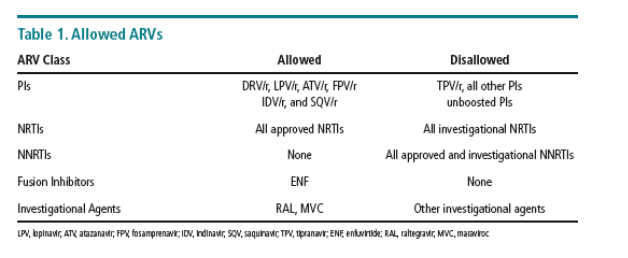
Assessments
-- Follow-up visits were recommended at Weeks 4 and 12, and every 12 weeks
thereafter
-- Lab assessments of viral load (VL) and CD4 count were performed locally and
reported electronically
-- Only serious adverse events (AEs) and AEs leading to discontinuation were collected
Sub-analysis
Inclusion criteria:
Participation in ETR EAP in the United States
New use of ETR (roll-overs from other ETR studies not included)
HIV-1 RNA data available for Week 12 and/or Week 24 visits as of June 26, 2008
--Methods:
Virologic response was defined as HIV-1 RNA <75 copies/mL due to frequent use of assays with <75 copies/mL as the lower limit of detection
Descriptive statistics are provided based on observed cases
Analysis does not control for baseline activity of ETR, DRV/r, RAL, or background ARVs
Treatment groups were defined based on the regimen received on Day 7
RESULTS
Among 2212 patients analyzed from the US EAP, 1675 met the inclusion criteria for this sub-analysis (Table 2):
-- Approximately 10% were female, 23% were black, and 16% were Hispanic
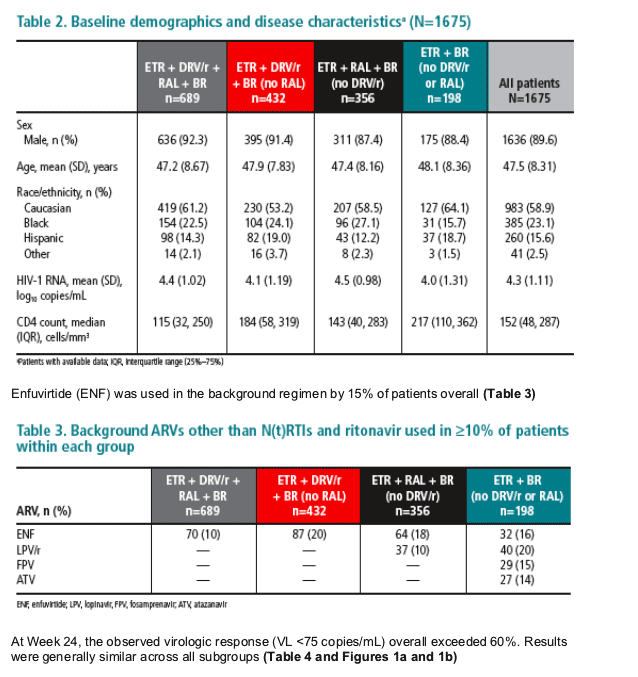
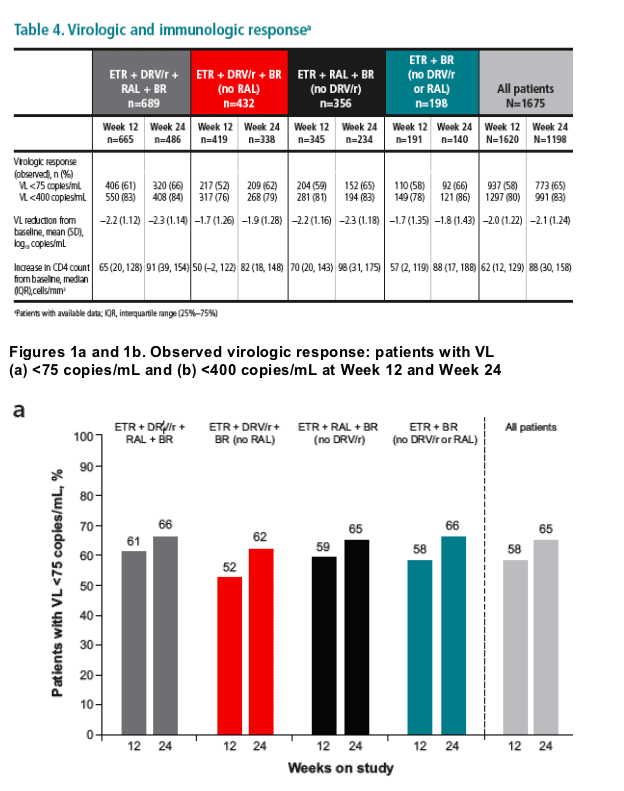
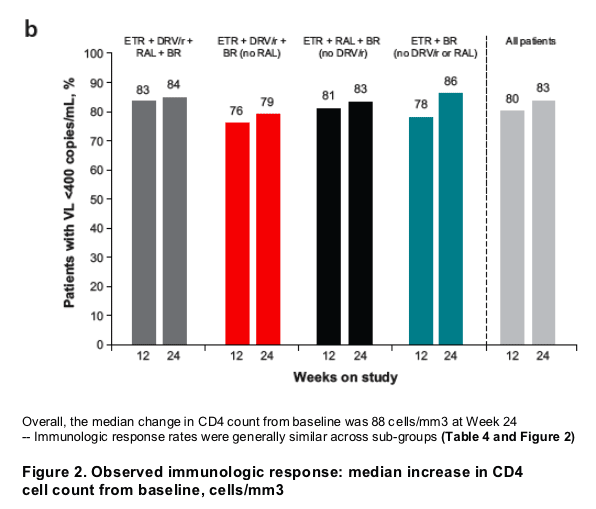
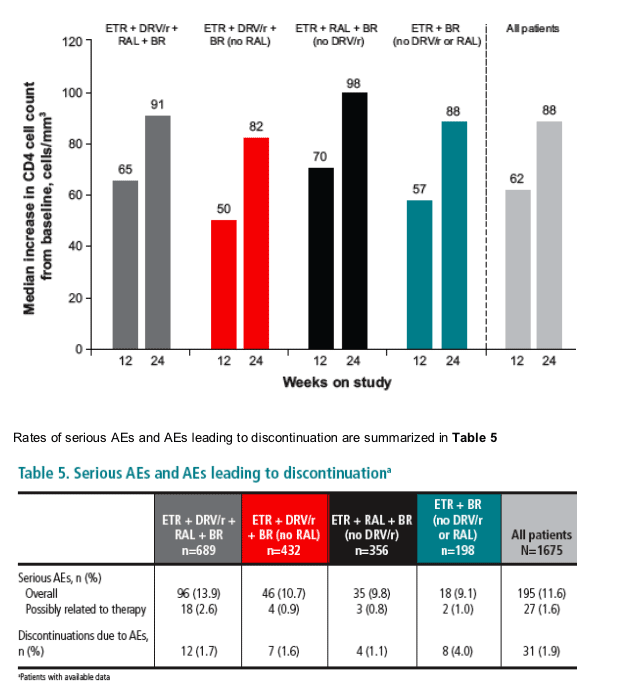
|
| |
|
 |
 |
|
|